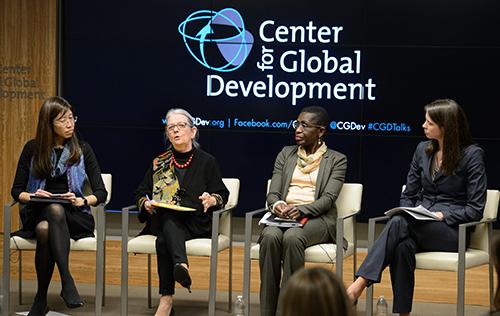For over a decade, donors and developing countries alike have embraced the notion that “country ownership” should be central to the way aid is designed and delivered. Ownership is widely considered critical for achieving and sustaining program results, building local capacity to help countries transition from aid, and strengthening the citizen-state compact by shifting accountability for results to the partner government.
Last week the US Development Policy Initiative (DPI) launched new research (plus a brief) that explores how two key US foreign assistance agencies—USAID and MCC—conceptualize country ownership and implement the principle in practice. The new paper, Implementing Ownership at USAID and MCC: A US Agency-Level Perspective, complements our earlier quantitative look at perceptions of US approaches to country ownership practices. The paper finds strong commitment to ownership by both MCC and USAID. It also identifies several challenges with implementing the principle, including balancing country priorities with other agency needs and weighing tradeoffs between ownership and programmatic/fiduciary risk. We propose several recommendations for how the two agencies might build on their existing practices to focus on country ownership, as they do, generate a body of evidence around the results of ownership-oriented practices.

To amplify the discussion on country ownership, we convened a panel of high-level policymakers from inside and outside the US government to talk about their experience applying the principle, reflect on its importance, and discuss challenges and trade-offs. Much of the conversation echoed—and added to—the findings in the paper. Here are three key messages I heard from the expert panelists:
-
The United States has made great strides incorporating ownership. Patricia Rader from USAID highlighted the evolution of the agency’s approach to ownership. USAID starting with a heavy focus on providing inputs (channeling money through local organizations and institutions), but is now fostering a more holistic approach by working with country partners to identify priorities, design and implement programs, and put local resources toward them. MCC, whose foundational model underscores the importance of country ownership, applied lessons from its early days to develop an approach to partnership that emphasizes the leadership role of partner countries in a more structured and constructive way. As Scott Morris noted, the fact that the US government has made such progress incorporating ownership highlights its value to stakeholders in US foreign assistance, especially since ownership runs counter to two core political tendencies in foreign assistance—the desire by donors to dictate how aid money is spent and the instinct to tightly control fiduciary risk.
-
Ownership is a balancing act. While ownership is seen as a necessary condition for aid effectiveness, it’s not the only thing that donors need or want to pursue. For instance, Kyeh Kim from MCC acknowledged the tradeoff between building capacity of local implementers and getting things done quickly. While MCC staff understand that their job is “not to do, it’s to teach, facilitate, and mentor,” Kim recognized competing pressure to ensure MCC’s large scale investment programs are fully executed within a fixed timeline. Antoinette Sayeh, a distinguished visiting fellow at CGD, highlighted the complexities of ownership in donors’ policy reform efforts, especially in the face of resistance from local vested interests. Drawing on her years of experience at the International Monetary Fund and her time as Minister of Finance in Liberia, she cautioned against equating ownership with preservation of the status quo and noted the important role donors can play in supporting reformist leaders. Recognizing the additional risks associated with direct local partnerships, USAID’s Rader suggested that these risks should ideally be weighed against the purported benefits (e.g., strengthened capacity, more sustainable results) on a case-by-case basis to decide when local partnerships are the right approach. However, she acknowledged that assessing the benefit streams of local partnerships is challenging since hard evidence on the additive value of ownership approaches is currently scarce.
- Incorporating ownership remains a work in progress: USAID has brand new operational guidance that advances the agency’s ownership efforts, but the agency will need a shift in organizational culture and the right incentives for staff to work in a new way. MCC, which built in a focus on ownership from the outset, is still learning what works and what doesn’t (and in what contexts) in locally-led program design and implementation. It will fall to the new administration to build on this positive momentum around ownership and make US foreign assistance more effective as a result.
Disclaimer
CGD blog posts reflect the views of the authors, drawing on prior research and experience in their areas of expertise. CGD is a nonpartisan, independent organization and does not take institutional positions.





